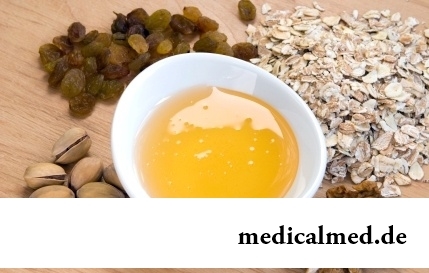





Heparin
Application instruction:
 Heparin – anticoagulant of direct action.
Heparin – anticoagulant of direct action.
Form of release and structure
Dosage forms of drug:
- Solution for intravenous (in/in) and hypodermic (п / to) introductions: light yellow or colourless transparent liquid (a bottle (bottle) of 1 ml on 5 or 10 pieces in planimetric strip or plastic (pallets) packaging, in a cardboard pack 1 or 2 packagings; on 5 or 10 pieces in a pack cardboard unpacked. An ampoule of 1 ml with an ampoule knife on 5 or 10 pieces in planimetric strip or plastic (pallets) packaging, in a cardboard pack 1 or 2 packagings; on 5 or 10 pieces in a pack cardboard unpacked. An ampoule of 2 ml with an ampoule knife, on 5 pieces in a blister strip packaging, in a pack cardboard 1 or 2 packagings. An ampoule of 5 ml with an ampoule knife, on 5 or 10 pieces in planimetric strip or plastic (pallets) packaging, in a pack cardboard 1 or 2 packagings. An ampoule of 5 ml with an ampoule knife, 5 or 10 pieces in a pack cardboard. An ampoule of 5 ml, 5 or 10 pieces in a pack cardboard. Bottle (bottle) of 5 ml, on 5 or 10 pieces in planimetric strip or plastic packaging (pallets), in a pack cardboard 1 or 2 packagings. A bottle (bottle) of 5 ml, 1, 5 or 10 pieces in a pack cardboard. An ampoule of polymeric 5 ml, on 5 pieces in a pack cardboard. A bottle (bottle) of 5 ml, on 5 pieces in a container polystyrene);
- Ointment for external use (on 10 or 25 g in tubas aluminum, in a cardboard pack 1 tuba);
- Gel for external use (on 15, 20, 30, 50 or 100 g in tubas aluminum, in a cardboard pack 1 tuba).
Active ingredient – heparin sodium:
- 1 ml of solution – 5000 ME;
- 1 g of ointment – 100 ME;
- 1 g of gel – 1000 ME.
Auxiliary components:
- Solution: sodium chloride – 3,4 mg, benzyl alcohol – 9 mg, water for injections to 1 ml;
- Ointment: benzocaine – 40 mg, бензилникотинат – 0,8 mg.
Indications to use
- Therapy and prevention: thrombophlebitises, a thrombembolia of a pulmonary artery (including in case of diseases of peripheral veins), a deep vein thrombosis, thrombosis of coronary arteries, unstable stenocardia, an acute myocardial infarction, a ciliary arrhythmia (including followed by an embolism), a syndrome of the disseminated intravascular coagulation (DIC), disturbance of microcirculation and a microthrombogenesis, fibrinferments of renal veins, a gemolitikouremichesky syndrome, a bacterial endocarditis, a glomerulonephritis, lupoid nephrite;
- Prevention: a blood coagulation during operations in which extracorporal methods of blood circulation, mitral heart disease, a hemodialysis, peritoneal dialysis, hemosorption, an artificial diuresis, a cytapheresis are used;
- Washing of venous catheters;
- Preparation of samples of not turning blood for the laboratory purposes and hemotransfusion.
Contraindications
Contraindications to use of Heparin in the form of solution:
- The heparin-induced thrombocytopenia in the anamnesis or now, with thrombosis or without it;
- Pregnancy and period of breastfeeding;
- Bleeding if the potential risk exceeds estimated advantage of use.
With care appoint solution at the morbid conditions interfaced to the increased risk of bleedings:
- Craniocereberal injury, hemorrhagic stroke;
- Malignant new growths;
- Cardiovascular system: aneurism of vessels of a brain, acute and subacute infectious endocarditis, heavy uncontrollable arterial hypertension, stratifying of an aorta;
- Bodies of lymphatic system and hemopoiesis: hemorrhagic diathesis, leukosis, hemophilia, thrombocytopenia;
- Ulcer colitis, erosive cankers of bodies of the digestive tract (DT), gullet varicosity, long use of gastric and enteric drainages, hemorrhoids;
- Inborn deficit of synthesis of antithrombin III and replacement therapy by antithrombin III drugs (for reduction of risk of bleedings it is necessary to use small doses of drug).
Other physiological states and pathologies at which it is necessary to apply solution Heparin with care: chronic renal failure; a serious illness of a liver with disturbance of proteinaceous and synthetic function; vasculites; proliferative diabetic retinopathy; recent surgical interventions on back or a brain, eyes; early puerperal period; recently carried out epidural anesthesia or a lumbar puncture; the menacing abortion; periods period.
Under fixed observation of the doctor it is recommended to use solution at treatment of children under 3 years and patients 60 years, especially are more senior than women.
Contraindications to use of ointment and gel:
- The diseases which are followed by disturbance of processes of a blood coagulation, bleeding, an aneurysm of vessels of a brain, the assumption of intracraneal hemorrhage, a hemorrhagic stroke, the stratifying aortic aneurysm, malignant arterial hypertension, a subacute bacterial endocarditis, an anti-phospholipidic syndrome;
- GIT erosive cankers, malignant new growths in a liver, severe defeats of a parenchyma of a liver, cirrhosis with a gullet varicosity, depressed cases;
- The recovery period after surgical intervention on a liver and bilious ways, a brain, eyes, a prostate gland, a puncture of a spinal cord;
- Recent childbirth, periods, the menacing abortion.
Ointment and gel cannot be applied at ulcer and necrotic processes, on mucous membranes or open wounds.
Putting ointment or gel at pregnancy and during breastfeeding (lactation) is possible under careful medical observation, only according to strict indications.
Use of all dosage forms of Heparin is contraindicated to patients with hypersensitivity to drug components.
Route of administration and dosage
Solution is entered intravenously kapelno or bolyusno and subcutaneously into the area of a stomach. It is impossible to administer the drug intramusculary! Dosing is appointed by the doctor on the basis of clinical indications and taking into account age of the patient. Usually treatment is begun with intravenous administration 5000 ME, then passed to subcutaneous injections or drop intravenous administration.
The supporting dosing depending on a solution route of administration:
- Continuous intravenous infusion – 24000-48000 ME in days with a speed of 1000-2000 ME an hour;
- Regular intravenous injections – 5000-10000 ME with an interval of 4-6 hours;
- Subcutaneous injections – 15000-20000 ME 2 time or on 8000-10000 ME – 3 times a day.
For infusional introduction drug is dissolved by 0,9% with chloride sodium solution. Correction of each subsequent dose is made on the basis of regular researches of the activated partial tromboplastinovy time (APTT) and/or a blood clotting time. At hypodermic introduction 10000-15000 ME in days regular control of AChTV is not obligatory.
The period of treatment depends on a way of introduction and indications. Intravenously drug is used within 7-10 days, then treatment should be continued by peroral anticoagulants. It is recommended to appoint peroral anticoagulants from the first or from 5 to 7 days of treatment, cancellation of solution is appointed to 4-5 day of the combined treatment.
Use of Heparin at special clinical situations is made according to the special scheme.
Ointment and gel apply depending on clinical testimonies and age of the patient.
Side effects
- From coagulant system of blood: thrombocytopenia in a passing and severe form, in rare instances with a lethal outcome, can cause development of a necrosis of skin, arterial thrombosis, gangrene, stroke, myocardial infarction; hemorrhagic complications in the form of bleeding of a GIT or urinary tract, retroperitoneal hemorrhages in ovaries, adrenal glands with risk of development of acute adrenal insufficiency;
- From bodies of a GIT: nausea, vomiting, diarrhea, a loss of appetite, increase in level of transaminases in blood;
- From a musculoskeletal system: in case of prolonged use – calcification of soft tissues, osteoporosis and spontaneous fractures;
- Allergic reactions: urticaria, skin itch, dermahemia, bronchospasm, rhinitis, medicinal fever, anaphylactoid reactions, acute anaphylaxis;
- Local reactions: pain, a hematoma, bleeding, a hyperemia or ulcerations in an injection site;
- Others: oppression of synthesis of Aldosteronum, passing alopecia.
Special instructions
Prolonged treatment by high doses is recommended to be carried out in stationary conditions.
Use of solution has to take place taking into account blood coagulation indicators, in case of sharp decrease in quantity of thrombocytes it is necessary to cancel drug use immediately.
In case of purpose of drug in high doses or in the absence of reaction to Heparin it is necessary to control antithrombin III level.
Administration of other medicines in oil against the background of drug solution use is not recommended.
At patients with arterial hypertension treatment should be accompanied with regular control of arterial pressure.
With care patients should use drug at radiation therapy, dental manipulations, active tuberculosis, in the presence of an intrauterine contraceptive.
At treatment of women 60 years use of heparin sodium are more senior can increase bleeding therefore this category of patients should reduce a solution dose.
Adequate dosing, regular control of a blood coagulation and careful assessment of contraindications reduce risk of bleeding.
Medicinal interaction
Solution of Heparin is compatible only from 0,9% chloride sodium solution.
Heparin sodium strengthens effect of the drugs containing benzodiazepine derivatives, Phenytoinum, propranolol, quinidine.
Activity of drug tricyclic antidepressants, protamin reduce sulfates, polypeptides.
Anticoagulating effect of drug strengthens simultaneous use of thrombolytic means (an alteplaza, an urokinase, Streptokinasa), antiagregant (acetylsalicylic acid, Dipiridamolum, klopidogret, тиклопидин, prasugret), anticoagulants of indirect action (warfarin, аценокумарол, Fenindionum), non-steroidal anti-inflammatory drugs (NPVS).
The risk of bleedings increases simultaneous use of Heparin with a dextran, glucocorticosteroids, cytostatics, hydroxychloroquine, tsefamandoly, valproyevy and Acidum etacrynicum, propylthiouracil.
Anticoagulating effect of drug reduces a concomitant use of corticotropin, ascorbic acid, nitroglycerine, alkaloids of an ergot, quinine, nicotine, tetracycline, cardiac glycosides, antihistamines or thyroxine.
Drug can reduce action of glucocorticosteroids, adrenocorticotropic hormone, insulin.
Terms and storage conditions
To store in the unavailable to children, dry, protected from light place at a temperature: solution and gel – is not above 25 °C; ointment – to 20 °C.
Period of validity: solution, ointment – 3 years; gel – 2 years.
Name of drug
Price
Drugstore
Heparin ointment 25 of, Nizhpharm (N. Novgorod)
72 rub.
 Network of the Moscow drugstores of IFC
Network of the Moscow drugstores of IFCHeparin solution for инъ 5 thousand ME/ml 5 of ml No. 5, Belmedpreparata (Minsk)
265 rub.
 Network of the Moscow drugstores of IFC
Network of the Moscow drugstores of IFCThere are very curious medical syndromes, for example, persuasive swallowing objects. In a stomach of one patient suffering from this mania 2500 foreign objects were revealed.
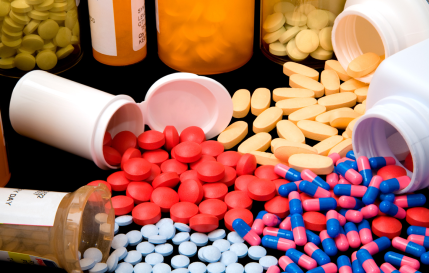
Long time antibiotics were considered as a panacea from all diseases and were appointed even at insignificant symptoms of an infection. Even now...
Section: Articles about health
Tuberculosis – a serious infectious disease which development is caused by mycobacteria (Koch's bacilli). The illness is known from an extreme antiquity. Long time fight against it was considered as ineffective. Quite often the disease affected the whole families, and mortality from it was very much...
Section: Articles about health
The pine is one of the most widespread plants of our woods. Its needles and pitch not without reason called by "gallipot" were since ancient times used for strengthening of protective forces of an organism, treatment of avitaminosis, anemia and many other diseases. In recent years wide popularity was gained by the national medicines prepared from pinecones. "Fruits" of a coniferous tree contain a huge amount of vitamins, biologically active agents, antioxidants, phytoncides and other useful to...
Section: Articles about health
New year, wedding, birthday, office party – an occasion to drink at the Russian person will always be. How to reduce a negative impact...
Section: Articles about health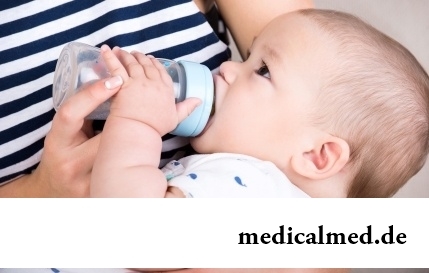
Producers of milk mixes for children assure: mixes are ideally balanced and adapted for needs of babies. If mother should raise artificially the kid owing to serious problems with health, to do nothing – m substitutes...
Section: Articles about health
Visit of doctors – business not the most pleasant, and many people do not hurry to undergo necessary planned inspections. Such behavior is extremely thoughtless and improvident. Our health is necessary not only to us: wellbeing of darlings, children, grandsons and aged parents directly depends on as far as we are vigorous and able-bodied. Therefore in time to be inspected – a duty of any modern person. Specialists consider that 7 regular surveys and di are especially necessary for women...
Section: Articles about health
Run - one of the most available and effective ways to revitalize the organism. Knowing about its extraordinary advantage, each of us though...
Section: Articles about health
Aspirin (acetylsalicylic acid) – one of those drugs which are known literally to all. It is available in each home first-aid kit, and many accept it at the first signs of an indisposition, often without having a fair idea of properties and a therapeutic eff...
Section: Articles about health
Dietary supplements (dietary supplements) for the last decades were so thoroughly included into our life that, apparently, it is already impossible to find the person who at least once did not try them. At the same time, most of our compatriots have a vague idea of what dietary supplements as they affect a human body consist of and what differ from the real medicines in. Let's try to understand these questions, and at the same time and to understand, such additives are how necessary for us....
Section: Articles about health
Hemorrhoids – extremely widespread disease. Periodically arising inflammations and bleeding of hemorrhoidal nodes пр...
Section: Articles about health
Many of us, probably, noticed more than once that from intellectual loadings at some point the brain as though "overheats" and "assimilation" of information is strongly slowed down. Especially this problem urgent for persons of age becomes more senior than fifty years. "It is already bad with...
Section: Articles about health
The advantage of swimming for the person is so high that this sport is not only the most popular, but also is widely applied in medicine and rehabilitation processes. If you look for for yourself the occupation allowing pleasantly and to spend time, then swimming with advantage – the fact that it is necessary for you. And give learns several facts about swimming....
Section: Slideshow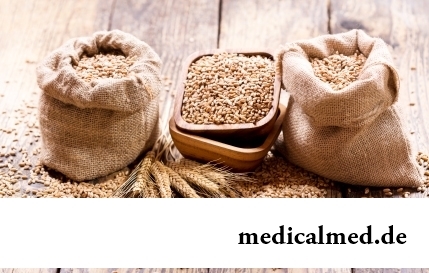
The concept "gluten" (differently, a gluten) combines group of the proteins which are a part of rye, barley and wheat. For most of people упот...
Section: Articles about health
For many spouses the question of planning of a family is one of the main. The problem of the choice of effective and safe contraceptives at the same time comes out on top. Russians still not often resort to operation of a vasectomy extremely popular in the USA...
Section: Articles about health
Residents of big cities quite often have a disease which is known as the syndrome of chronic fatigue (SCF) today. This illness affects the people belonging to various social and demographic groups and living on all continents. Most of all SHU are subject women aged from 25 up to 45 years. Statistically, the number of cases fluctuates in the different countries from 10 to 37 people on 100 thousand, but specialists believe that these figures are significantly underestimated as people, страдающ...
Section: Articles about health
The fatigue, sleep debt, disturbances of food, bad mood, vagaries of the weather – all these circumstances badly are reflected in our vn...
Section: Articles about health
Diapers for adults – individual one-time means of hygiene which in some situations is irreplaceable and from such situations any person is not insured. Though nobody perceives need of their use with enthusiasm, however without it to a sra...
Section: Articles about health
The main role in development of a peptic ulcer of a stomach and duodenum the bacterium Helikobakter plays pilor. Activity and the strengthened reproduction of this microorganism lead to weakening of protection of mucous membranes and their erosive damage. Displays of an illness seriously reduce quality of life: patients regularly test attacks of severe pain, heartburn, nausea. On this background also psychoemotional malfunctions develop: a kidney-vetch, as a rule, shows an acrimony, ча...
Section: Articles about health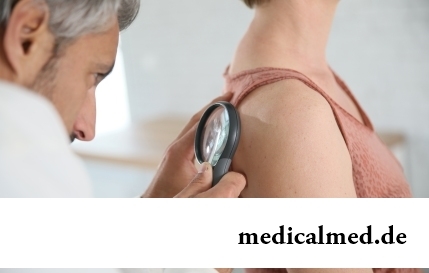
Scientists have no unambiguous opinion on a proximate cause of emergence of a carcinoma cutaneum today. Are precisely established only фа...
Section: Articles about health
All got used long ago that, having addressed the plastic surgeon, it is possible to modify natural parameters of a figure or to minimize the damages put to appearance with ruthless time. Many people (preferential women) worldwide е...
Section: Articles about health
For the person who daily since morning gathers for work it is very important to wake up vigorous and ready by day of work. Actually, each of us experiences difficulties with this, at first sight, simple business from time to time. After night rest exert impact on a condition of an organism the weather which collected for several days fatigue, household and office problems, quality of a dream and many other factors....
Section: Articles about health
It would seem, to buy drugs in Moscow does not make a problem – a drugstore, and not one, is available for each resident of the capital in step a toast...
Section: Articles about health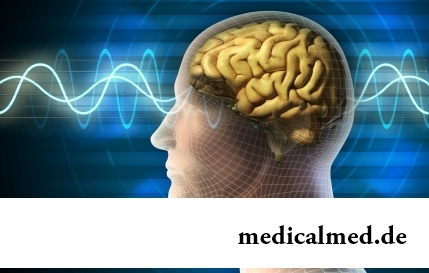
The brain of the person is studied not one hundred years, but the quantity of the riddles connected with this body increases rather, than decreases. Perhaps, numerous delusions concerning a structure and functioning of a brain, many are explained by it from...
Section: Articles about health
The majority of gynecologic diseases prove three main signs, each of which speaks about need of a visit to the gynecologist. Certainly, it is possible to establish the exact diagnosis only after inspection, but on the basis of some signs it is possible to assume existence of this or that pathology. Let's consider symptoms of the female diseases which are found most often....
Section: Articles about health
It seems, quite recently you brought the baby from maternity hospital, but time flew by, and here it is already going to join the first...
Section: Articles about health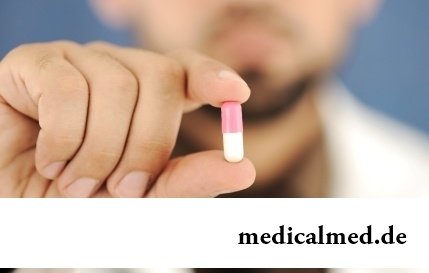
The drugs stopping or oppressing life activity of pathogenic microorganisms are widely applied in clinical practice from 40th years of the last century. Originally antibiotics were called only substances natural (animal, vegetable or микробног...
Section: Articles about health
Stroke (acute disorder of cerebral circulation) – one of the most widespread neurologic diseases. Annually in the world more than 6 million people die of this illness. From the survived patients about 80% become disabled people, and nearly a third from them needs afterwards permanent care. In fact, the stroke creates a situation at which a part of cells of a brain loses blood access, loses an opportunity to receive oxygen and nutrients, and perishes. As a result of a razviv...
Section: Articles about health

